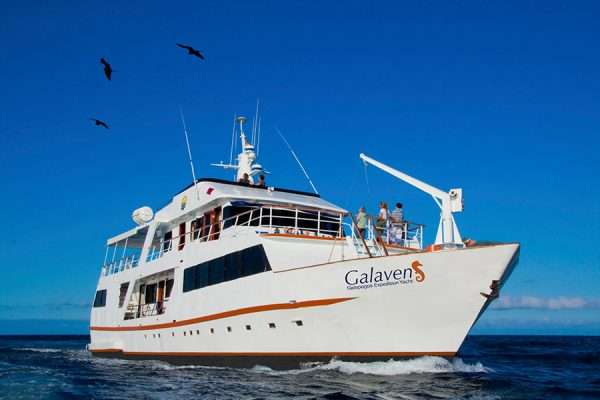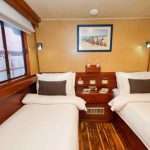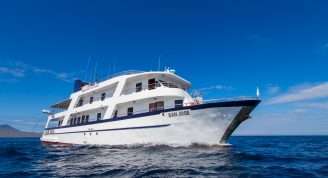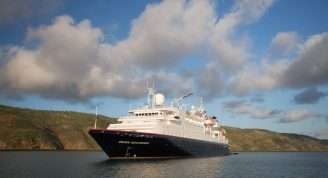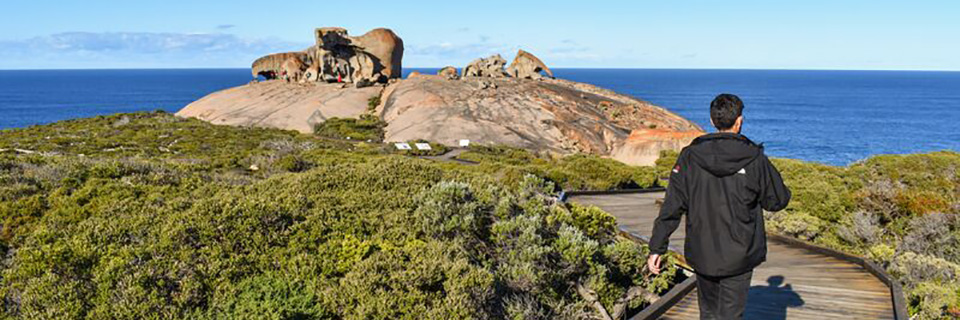Description
The Galaven is for adventurers with a mid-range budget who want to visit Galapagos.
Islands you will visit:
– Baltra
– Genovesa Island
– Santiago Island
– Santa Cruz Island
– Floreana Island
– Española Island
– San Cristobal Island
Trip Name
Galapagos Adventure - 8 Days A (Galaven)
Days
8
Overview
Vessel Type: Expedition Yacht
Length: 27 m
Passenger Capacity: 20
Built / Refurbished: 2000
The Galaven is for adventurers with a mid-range budget who want to visit Galapagos.
This 88-foot motorized, 20-passenger yacht offers high-polished wood trim and floors, a library with TV and DVD player, and sun deck with chaise lounges. The spacious dining area allows you to comfortably eat while marveling at the stunning views of the Galapagos archipelago.
The eleven double cabins spread over the ship’s three decks have air conditioning and private bathrooms with hot water. The Galaven has two different eight-day itineraries, as well as four- and five-day excursions. Two bilingual national park naturalist guides will show you the wonders of the Galapagos. Also accompanying you on the cruise are the captain and eight crew members.


